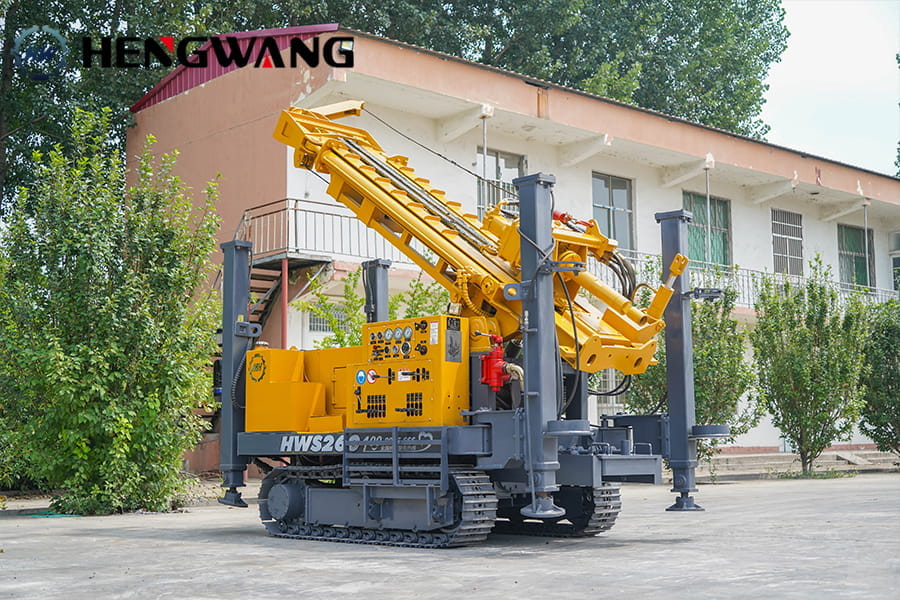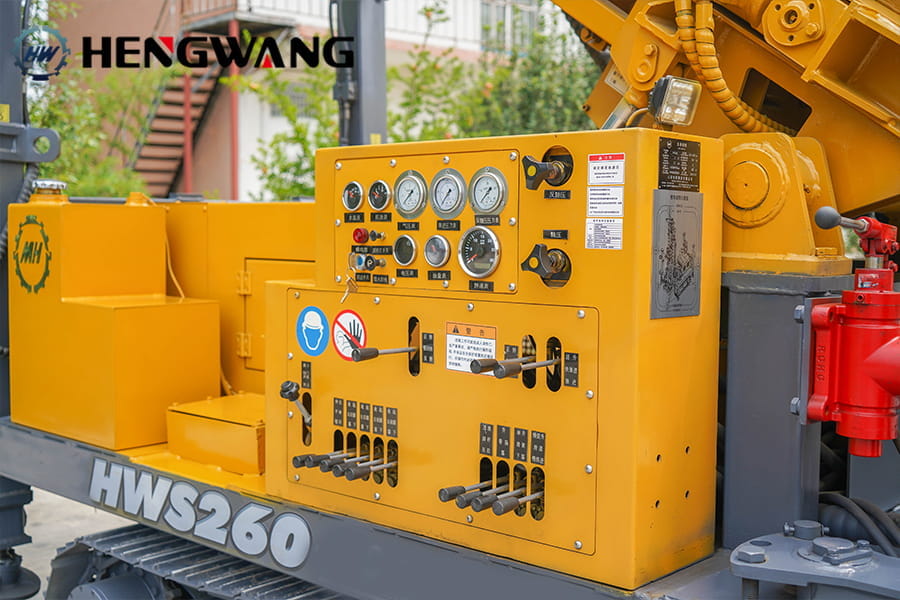

Key Operational Considerations
Real-Time Monitoring
Operators must continuously observe instrument readings during pneumatic drill rig operations. Immediate shutdown is required upon detecting abnormal vibrations, pressure fluctuations, or irregular hydraulic system behavior to prevent equipment damage.
Geological Adaptability
When encountering hardened rock layers or compacted sediments, deploy pneumatic impact tools or specialized drill bits for fragmentation. Maintain steady pressure adjustments to avoid sudden torque spikes in rigs for drilling.
Preventive Maintenance
Conduct daily inspections of chains, hydraulic lines, and pressure gauges to ensure functional integrity.
Lubricate guide rails and mechanical joints weekly to reduce wear on water well drilling machines.
Replace worn-out components promptly, prioritizing chain systems that provide stable lifting force over auxiliary wire ropes.
Workspace Management
Clean drilling equipment surfaces after operations to prevent debris accumulation. Secure the rig for drilling on stable ground and verify alignment before initiating tasks.
Shift Handover Protocols
Verify operational logs, test control responsiveness, and inspect emergency shutdown systems during crew transitions to maintain continuity in drilling operations.
Maintenance Best Practices
Perform monthly system pressure tests to detect leaks or calibration drift in hydraulic components of water well drilling machines.
Schedule quarterly overhauls for pneumatic drill rig compressors and rotary assemblies to extend service life.
Store equipment in dry environments to prevent corrosion, particularly for electronic sensors and valve systems.
Hengwang Group's expertise ensures that adherence to these protocols enhances drilling efficiency while reducing downtime and repair costs across all rig for drilling applications.